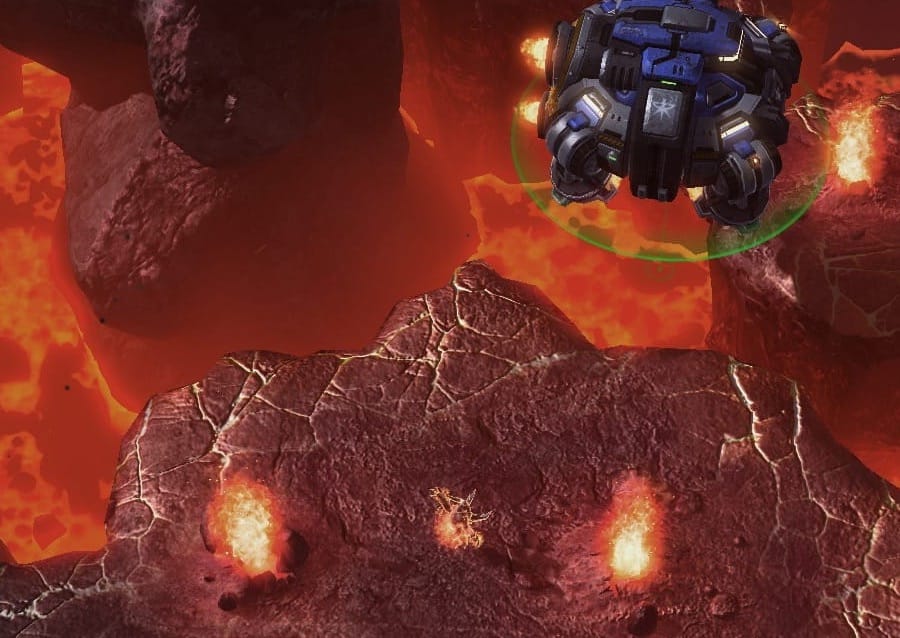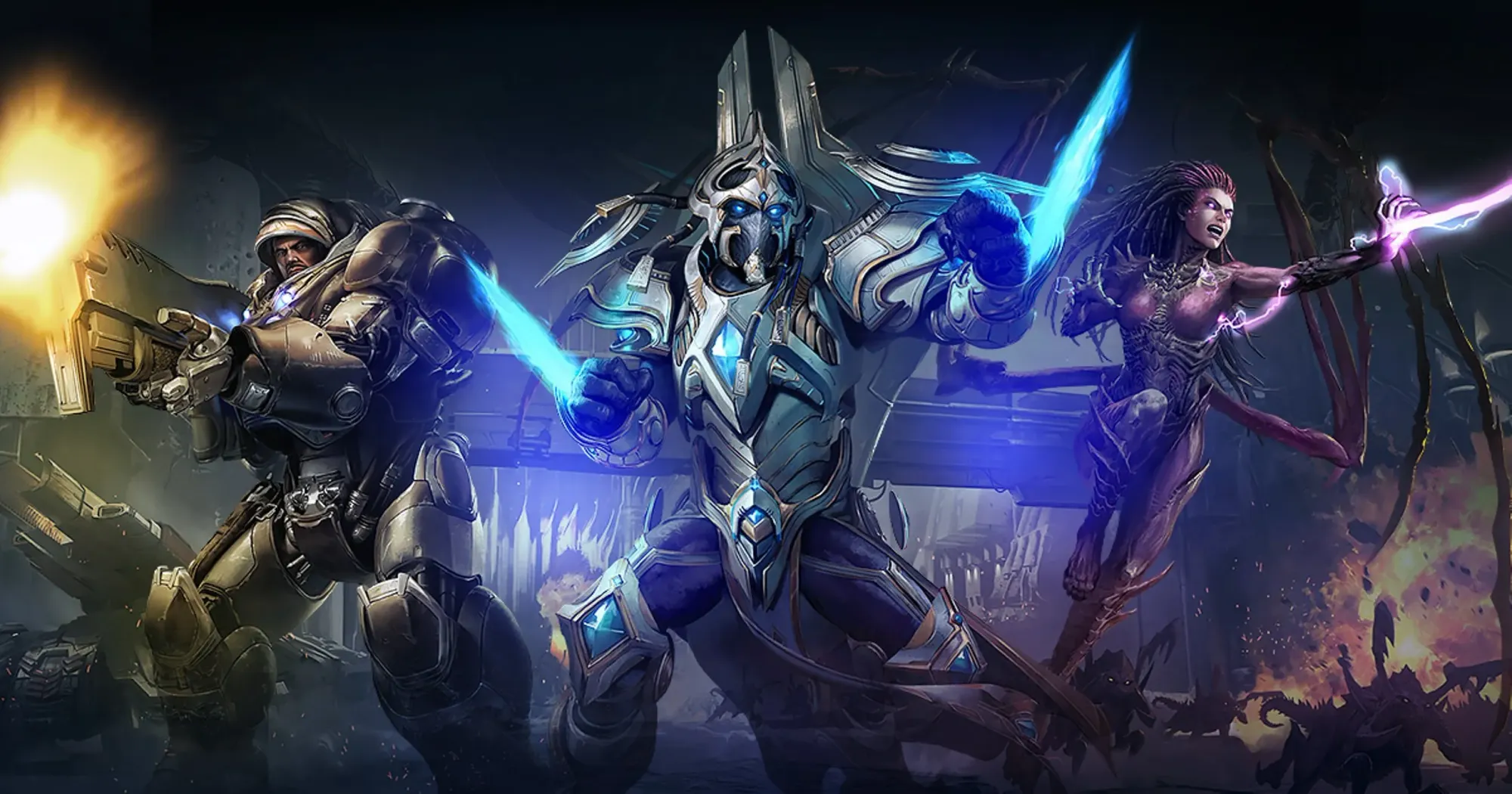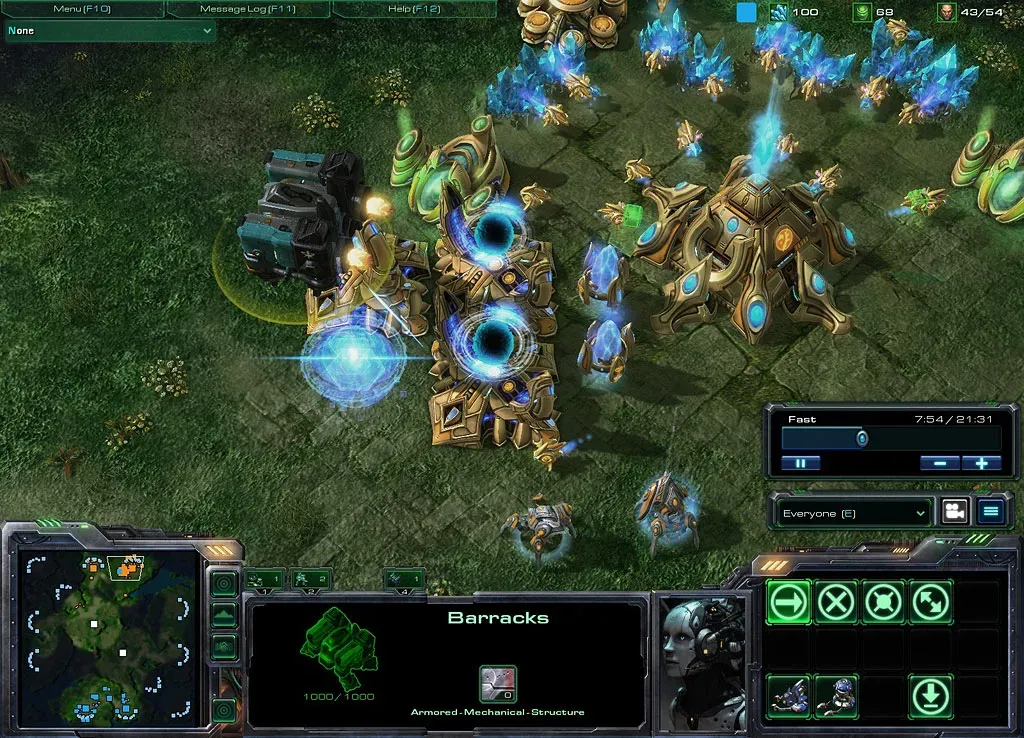Here’s How StarCraft II Pulled Off a “The Floor is Lava” Level
Real-time strategy games, take note

StarCraft II isn’t your run-of-the-mill strategy game. You don’t see floating buildings and units combining to form even more powerful ones every other day. Constant updates from Blizzard and a promising esports scene make it a decade-old game that can still comfortably trade blows with newer entries in the genre. Its unconventional approach to warfare makes Age of Empires look pedestrian in comparison.
I’ve been dabbling in strategy games ever since my dad built a PC in front of me when I was a kid. And it was unsettling to see a game handily toss things I considered as RTS limitations out the window. I started with the original StarCraft first and it defied expectations despite its 1998 origins. The pacing was something I had to get accustomed to. I couldn’t just admire the units and watch them trot about anymore.
The drop from a 4-resource system in Age of Empires to a lean 2-resource one radically changed how I approached the game. No longer did I have to wonder where my food came from. Neither did I have to grapple with a tech tree that puts most family trees to shame. I thought the first StarCraft was an innovative break. And then I headed into StarCraft II.
It stomped out those notions with more than fresh layers of paint.

Lava lamp
The mission in question is “The Devil’s Playground.” Or “Burning Tide” if you’re more familiar with the multiplayer variant of said level. You heard that right, this game has a level where the lower portion of the game is flooded with molten lava at timed intervals. If you thought this isn’t complicated enough, there’s more. Those crystals you mine during regular matches? They’re down there. In the lava.
StarCraft II doesn’t ask you to finish off your opponents. That would require just a couple of aircraft. No, StarCraft II pits you in a race against your enemies to see who racks up the most number of crystals. From pits that are more often home to lava than solid ground. Sure, sending your workers in a long line while keeping your base at a higher ground would work in isolation. But when an opponent is at your heels, desperation makes way for innovation.
You’ve got no choice but to place your command center in a spot that can send liquid hell your way in a moment’s notice. Here’s where StarCraft IIplays with your mind once more. With a tactic I have yet to witness in a video game.
Floating buildings enter the scene.

Cloud nine
If the image above doesn’t make you giddy with excitement as an RTS player, I don’t know what will. The possibilities that the Terran race’s floating buildings possess merit an article of their own. Nonetheless, it’s something that handily routs most conventional real-time strategy encounters. Our lava problem doesn’t sound so terrible now, does it?
Pop a command center between those shiny crystals, hog up those crystals like a kid at the cafeteria, and lift off as the lava gets a taste of your exhaust fumes. From being an impossible proposition, the mission boils down to where you position your base and how safe you want to play it. Approaching death’s fiery embrace only to head into the skies at the last moment is an experience StarCraft II bestowed upon me. Seducing an enemy’s army to watch them drown in molten lava is a tantalizing state of affairs that needs to be pursued with utmost caution.
And I’m just getting started.
